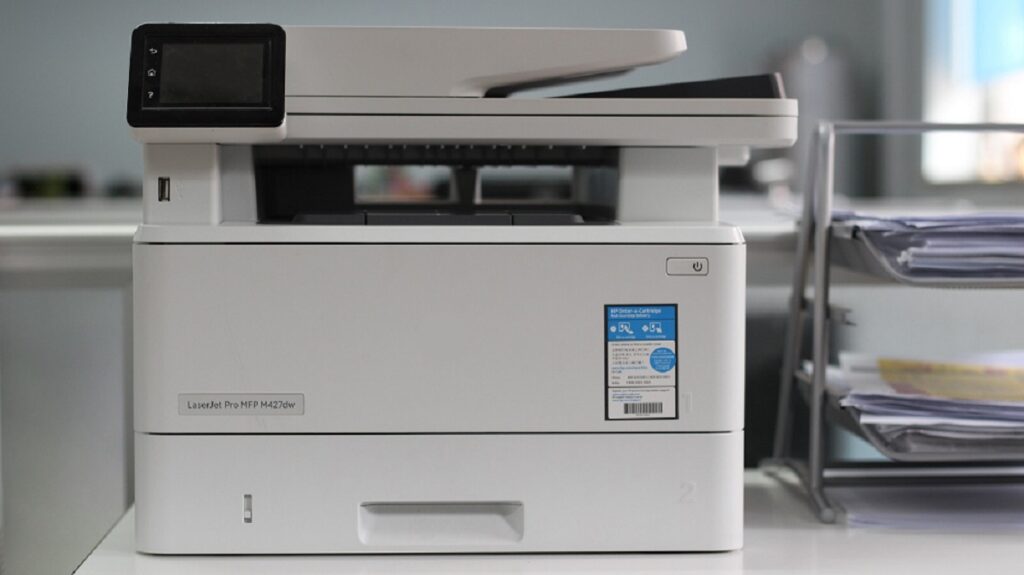
The first LED printer was introduced in 1989. The LED printer was created because of the high reliability, print quality, energy efficiency and speed that these compact printers achieve. We are now a few years further and the best LED printer beats all other printers on the market!
In this article you will find a buying guide with all information about LED printers and the best LED printers in black-on-white are in our top 5 so that you can enjoy the best LED printer for you!
LED printer buying guide: How to select the best LED printer?
An LED printer works on LED technology. The LED printer uses light-emitting diodes (the LEDs) to print. You can read exactly how this works and everything you need to know to make the best purchase below.
How an LED printer works
When the printer receives a print job, the image processor converts it into a ‘form’ that the printer understands. This shape is divided into lines consisting of dots.
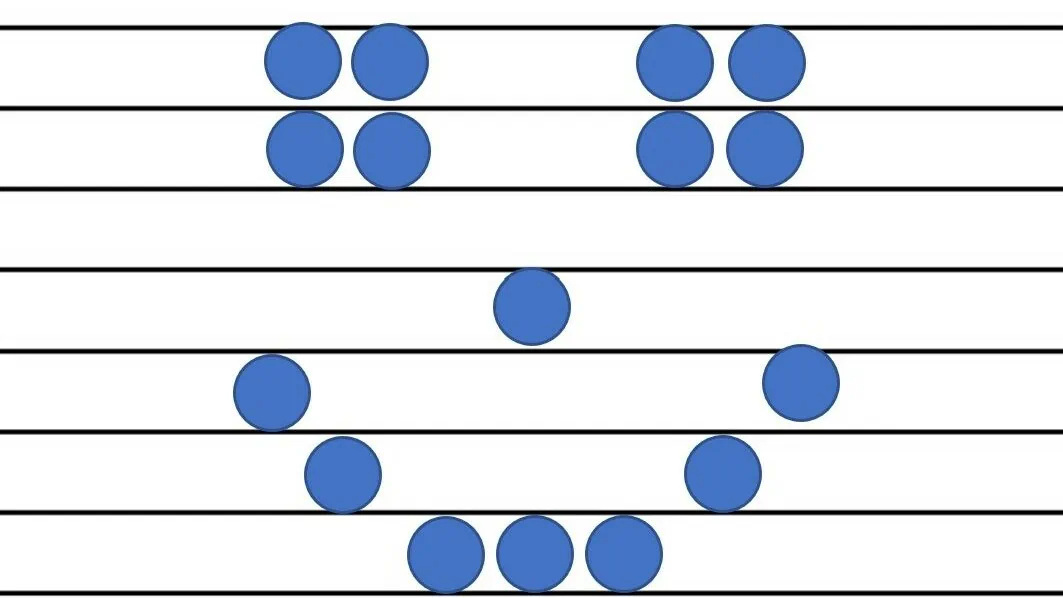
An LED printer works on the basis of electrical charge and the attraction and repulsion of positively and negatively charged particles.
Inside the printer is a drum, also called the drum. This is a rotating cylinder that prints the actual print on paper. When the printer starts, the drum starts rotating. It rubs against an electrically charged roller, causing the surface of the drum to become negatively charged.
The drum is photoconductive, meaning it is electrically conductive in the presence of a light source. The LED light in the printer is the light source.
As the drum rotates, the LEDs on the drum shine per ‘row’ on the spots of the dots. Where the lamps touch the drum, the negative charge is lost and neutral spots are created.
This creates the print impression on the drum in the form of neutral spots. To get the printout on paper, the following steps are important.
There is toner in a kind of canister . The canister moves up and down quickly, causing the toner to become negatively charged. The negatively charged toner is now attracted to the neutral spots on the drum and therefore adheres to these spots.
The toner now forms the image of the print on the drum. In the same time as the steps above, the printer applies a positive electrical charge to the print paper. This paper then rolls past the drum filled with toner.
The negatively charged toner is more attracted to the positive charge on the paper than to the neutral charge on the drum, causing the toner to transfer to the paper as the paper passes the drum.
The shape of the print is now on paper, but not finalized yet. This is done with the last roller. This roller heats up so that the toner melts and permanently adheres to the paper. Et voila! Pretty advanced for a technology that was already developed in the last century, isn’t it? 😉
In the video below you can see how a laser printer works. An LED printer and laser printer work almost the same, so this video gives you a better idea of how an LED printer works.
Advantages of LED printers
There are basically four printing technologies: matrix printing, inkjet printing, laser printing and LED printing. An LED printer has many advantages compared to its competitors. A laser printer is durable, versatile and has a long lifespan.
To better understand the benefits, I will discuss the advantages and disadvantages of the mentioned printing technologies below. 👇
A dot matrix printer works with pins and ink ribbon and is especially suitable for printing text. The best dot matrix printer also prints images, but the print quality is less good.
These printers have largely been replaced by inkjet, laser and LED printers, and for good reason. Despite the relatively low printing costs (due to the use of ribbon), they are noisy, heavy and have an inferior print quality.
An inkjet printer uses ink cartridges. This contains liquid ink that the printer sprays onto the paper. This ensures a high resolution and good color reproduction. This is where an inkjet printer beats a laser printer.
A laser printer, on the other hand, is a lot faster than the above printers. The boundary between ink and paper is also stronger, making these printers more suitable for sharp texts and images with sharp transitions.
Moreover, a laser printer uses toner instead of ink, which is an advantage! First of all, ink on paper is less resistant to moisture, and it sometimes happens that the ink creates a smudge or stain on the paper.
You also run the risk of the ink drying out in the inkjet nozzle. Not only can this cause blockages, it also ensures that an ink cartridge lasts less than a toner. A laser printer therefore generally has a lower cost per page than an inkjet printer.
As I said, an LED printer works much the same as a laser printer. You therefore enjoy the same benefits as a laser printer. There is a small (cheap) difference between LED and laser printers.
The laser of a laser printer shines on a moving mirror and therefore on the drum in a moving way. An LED printer has light-emitting diodes that shine directly on the drum. First of all, this leads to a higher print quality.
Secondly, it means that an LED printer consists of fewer and smaller parts, which means they fit into a more compact housing and are less susceptible to wear and tear and failure, meaning they last longer.
In addition, an LED printer causes less particulate matter than a laser printer and an LED printer is the most economical of all types. LED technology requires little energy to produce razor-sharp prints and is extremely economical in sleep mode.
However, the acquisition costs are high. All advantages come with a price tag and this is also the disadvantage of LED printers.
LED printer type
Like laser and inkjet printers, LED printers can be used in a wide range of applications. You use them to print texts, but also for images. The technology is suitable for printing photos and takes up little space.

You see LED technology regularly on photo printers, but mostly on all-in-one printers. A good all-in-one printer is multifunctional and compact.
It sometimes happens that the LED technology is on a so-called single-function printer. These are only suitable for printing and not for faxing, copying and scanning.
The print quality
The color intensity and sharpness of the transition determine, among other things, the print quality, but the print resolution plays a major role in this.
The print resolution is determined by the number of dots per inch (dpi) and is comparable to the number of pixels per inch in which you express image resolution. It does not indicate the number of pixels per inch, but the number of dots that a printer can print per inch on a material.
The higher the dpi, the higher the resolution and the better the print quality. From 300 dpi the print is quite sharp, but most printers go higher than 300 dpi. A dpi from 2400 exceeds the limit of what the human eye can perceive. 👀
Dpi applies to both the vertical direction and the horizontal direction. For example, if 2400 × 600 dpi is specified, 2400 represents the vertical orientation and 600 represents the horizontal orientation. When you turn the paper, this number also rotates.
🔌 Connectivity
Although LED technology has been around for a while, you mainly see it on newer printers. And what else do you see on relatively new printers? Correct: wireless connection options.
You probably won’t come across an LED printer that doesn’t print wirelessly. Is this the case? Then you connect the printer to your PC via a USB cable, or in exceptional cases with a parallel printer connection.
A parallel printer connection is outdated and only serves to guarantee the connection to the PC. It is not possible to connect another device to it.
This is possible with a USB connection. For example, you can connect a USB stick to print the files on it. A USB connection therefore has added value even on a wireless printer.
Anyway, newer printers usually have the option to connect wirelessly for a reason. A wireless printer has no placement restrictions!

With wireless printers, in most cases it will be a WiFi printer. You connect this to the WiFi network, so that you then connect to the printer via your PC or telephone via the same WiFi network.
With such a printer, I advise you to pay attention to the type of connection to your network.
Some WiFi printers connect you wirelessly to your network, some via an Ethernet cable, and some offer both options. If possible, I recommend choosing the latter. This way you always have a backup if one of the two options doesn’t work! 👍
Another well-known wireless connection you will come across is bluetooth. The advantage is that you do not need any external applications or network connection.
For Apple users, Apple Air Print exists. This allows you to print directly wirelessly from your Apple device without installing applications. And for anyone with a Google account, Google Cloud Print is a good alternative. This lets you print from any Google app, even when you’re away from home.
And for every smartphone user: almost every wireless printer has its own app with which you can send print jobs wirelessly!
NFC (near field communication) is suitable for connecting to any mobile device that also has NFC. You establish the connection by holding your mobile device against the indicated NFC location of your printer.
And last but not least is printing via e-mail. The printer will then have an assigned email address. With ‘e-mail print’ it is possible to send a print job to your printer from any location.
You add a document in the attachment of your e-mail and send it to the e-mail address of your printer. Once it has received your email, the printer will print the file.
Paper sizes and trays
Most printers print at least in A4 format. If you prefer to print in a larger, smaller or different format, it is important to see whether this is possible.
It is also important to check whether the printer is capable of printing on special paper. There are printers that are suitable for printing on envelopes or photo paper.
Another thing to look at is paper capacity. This is the number of sheets of paper that will fit in the print tray. If this is a small number, but you print a lot, you are regularly refilling paper. 📃
In addition, there are printers with a second tray. This tray is for a different paper type, size, or to increase capacity.
Functions
There are some functions that make working with your printer just that little bit better. It can’t hurt to check carefully which you think is a must-have, which you like but don’t need and which you don’t need.
Duplex printing, scanning and copying
To save paper and costs, or simply because it fits the print job, it is nice if the printer can print double-sided. What’s even better in that case is if this happens automatically and you don’t turn over sheets of paper yourself: easy and time-saving .
If your printer can also copy or scan, it is also possible to scan or copy on both sides if your printer has this function.
Automatic Document Feeder (ADF)
Many LED printers are all-in-one printers and are capable of scanning and copying. If this is the case and you are scanning or copying multiple pages, the ADF will come in handy. You do not place one sheet under the scanner at a time, but in a special input tray of the printer that feeds and positions the sheets itself.
Do you want to scan or copy on both sides ? Then make sure that the automatic document feeder is suitable for this.
Borderless printing
If you print a lot of photos, borderless printing is a great option. With this function you can print on the entire sheet so that you no longer see a white border. If your printer does not have this function, but you do like to print photos, it is not the end of the world: fortunately there are also cutting plotters !
Card readers and media slots
As I wrote earlier, a USB connection also has added value on a wireless printer. A USB connection offers the possibility to print directly from the connected device.
In some cases, the printer has a slot for an SD card, which is useful for the same reason.
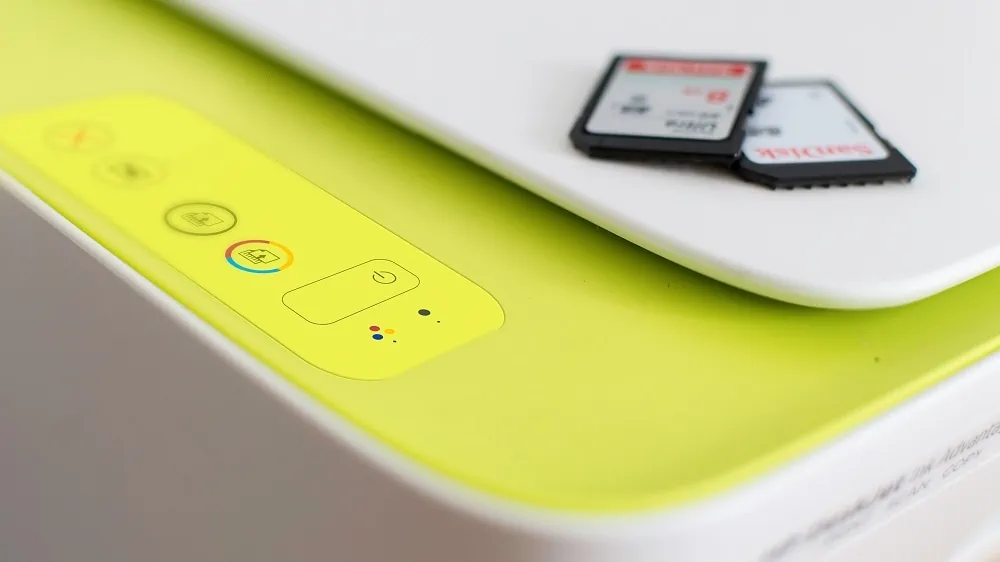
LCD display and operation
You set most settings for printing via the device where you send the print job, but scanning or copying is done via the printer. A clear display, possibly with a touchscreen, is not a superfluous luxury.
Depending on your printer, the display also gives you error messages, shows you how much toner is left and shows the print progress.
🔊 Sound level
The noise level of a printer varies by model. Decibel is the measure of noise and the more decibels, the more noise the printer produces. If you quickly experience sound as disturbing, this is something to pay attention to.
Fortunately, the noise of an LED printer is fairly low: about 40 to 50 decibels. Another advantage of LED printers!
Print speed
LED printers are relatively fast, but LED printers have different print speeds. Whether this is important depends on whether you print regularly.
For the speed, look at the number of prints per minute (ppm). The higher the ppm, the faster the printer.
🎨 Color or black-and-white?
Most LED printers are capable of printing in both color and black and white. Finding an LED printer with color is not too difficult. But do you want to print in color? My advice: only do it if it actually has added value.
First of all, it takes longer to print a page in color than in black and white. In addition, color toners are more expensive than black and white toners. In addition, with an LED printer, unlike inkjet printers, you don’t have to worry that the toner will become unusable after a while.
System requirements
Nowadays there are few printers that only work with specific operating systems, but be aware! It would be a shame if your new printer does not work with your PC, because your PC runs on Windows, for example, and the printer does not support it.
💰 Cost
LED printers are usually relatively expensive to buy, but also relatively cheap to run and because they last a long time, they may be cheaper in the long run. Therefore, in addition to the purchase price, also pay attention to the printing costs and costs in the longer term.
One of the influences on the printing cost per page is the toner. Toner is cheaper than ink and does not spoil, but the price of toner varies by brand.
An LED printer also uses relatively little toner, but keep in mind that not every LED printer uses the same amount of toner.
You can calculate the cost per page yourself if you know the cost of the toner and how many pages it will print. Divide the cost by the number of pages and you have the answer. Not great at math or do you simply not like it? Don’t worry, the consumption costs are usually indicated per page.
And to give you an idea:
- Less than 1 cent per page is very cheap.
- 1.1 to 4.6 cents per page is cheap.
- 4.6 to 10 cents per page is average.
- 10 to 15 cents per page is expensive.
- More than 15 cents per page is very expensive.
Usually, a cheap printer is expensive to use. Cheap is expensive goes perfectly with this.
Recommend and review the 5 best LED printers in 2023
1. Xiaomi Mi Portable Photo Printer

Printer type: Photo printer
Automatic 2-sided printing: No
Paper tray capacity: 10
Wireless Connection: Yes
2. Brother MFC-L3770CDW – Wireless All-In-One Printer
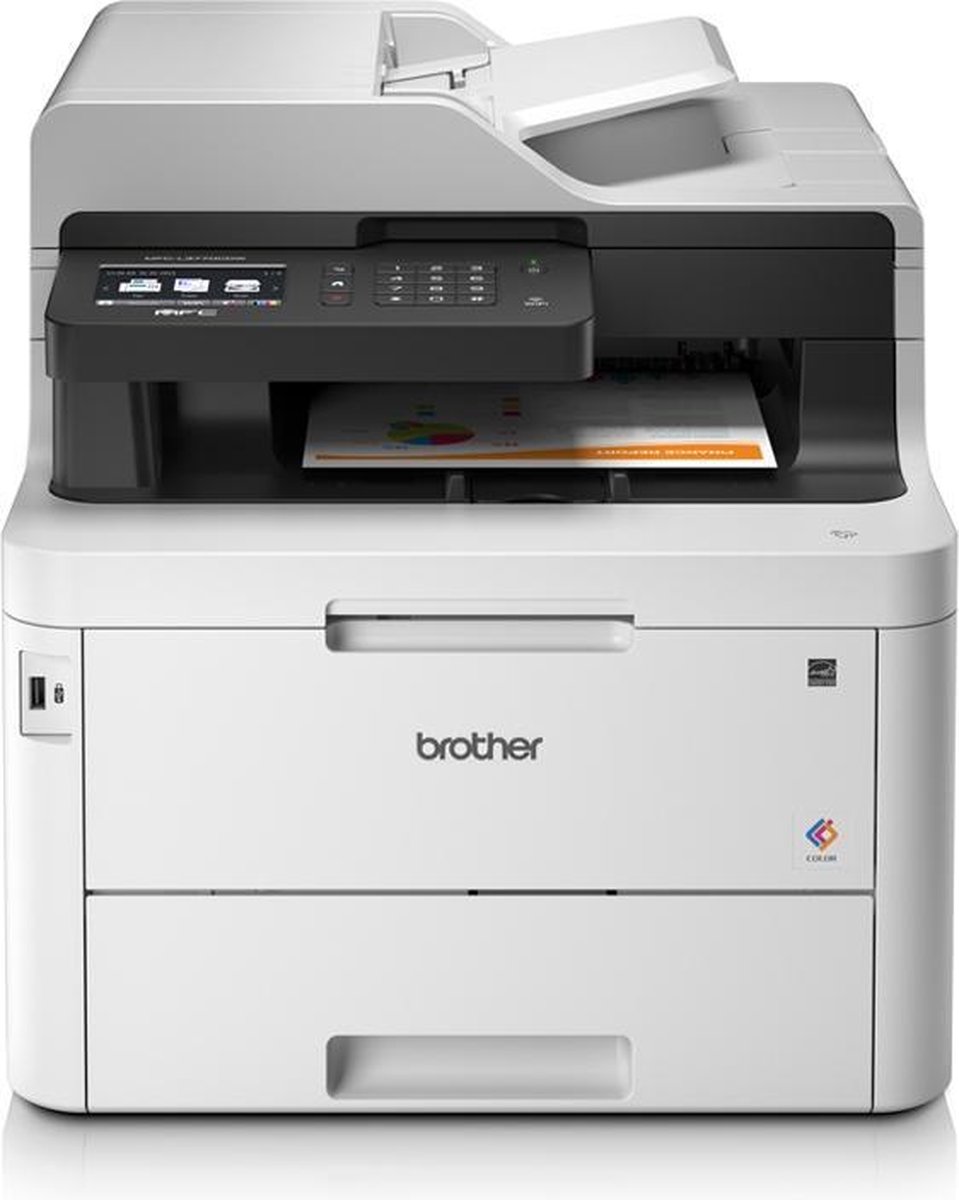
Printer type: All-in-One printer with fax
Automatic Duplex Printing: Yes
Paper tray capacity: 250
Wireless Connection: Yes
3. Brother HL-L3230CDW
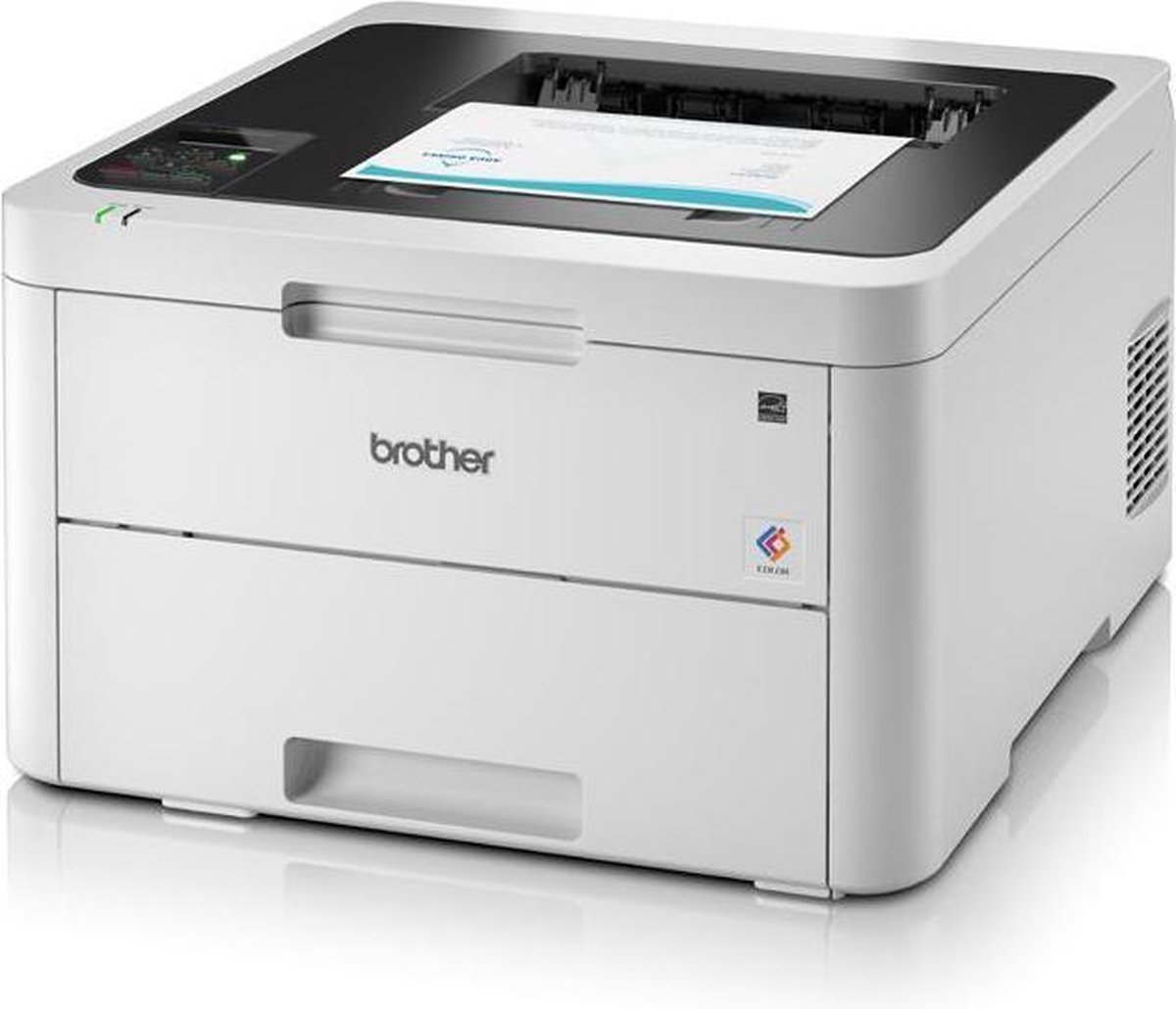
Printer type: Single function printer
Automatic Duplex Printing: Yes
Paper tray capacity: 250
Wireless Connection: Yes
Color mode for printing: Black-and-white and color
4. Brother HL-L3210CW
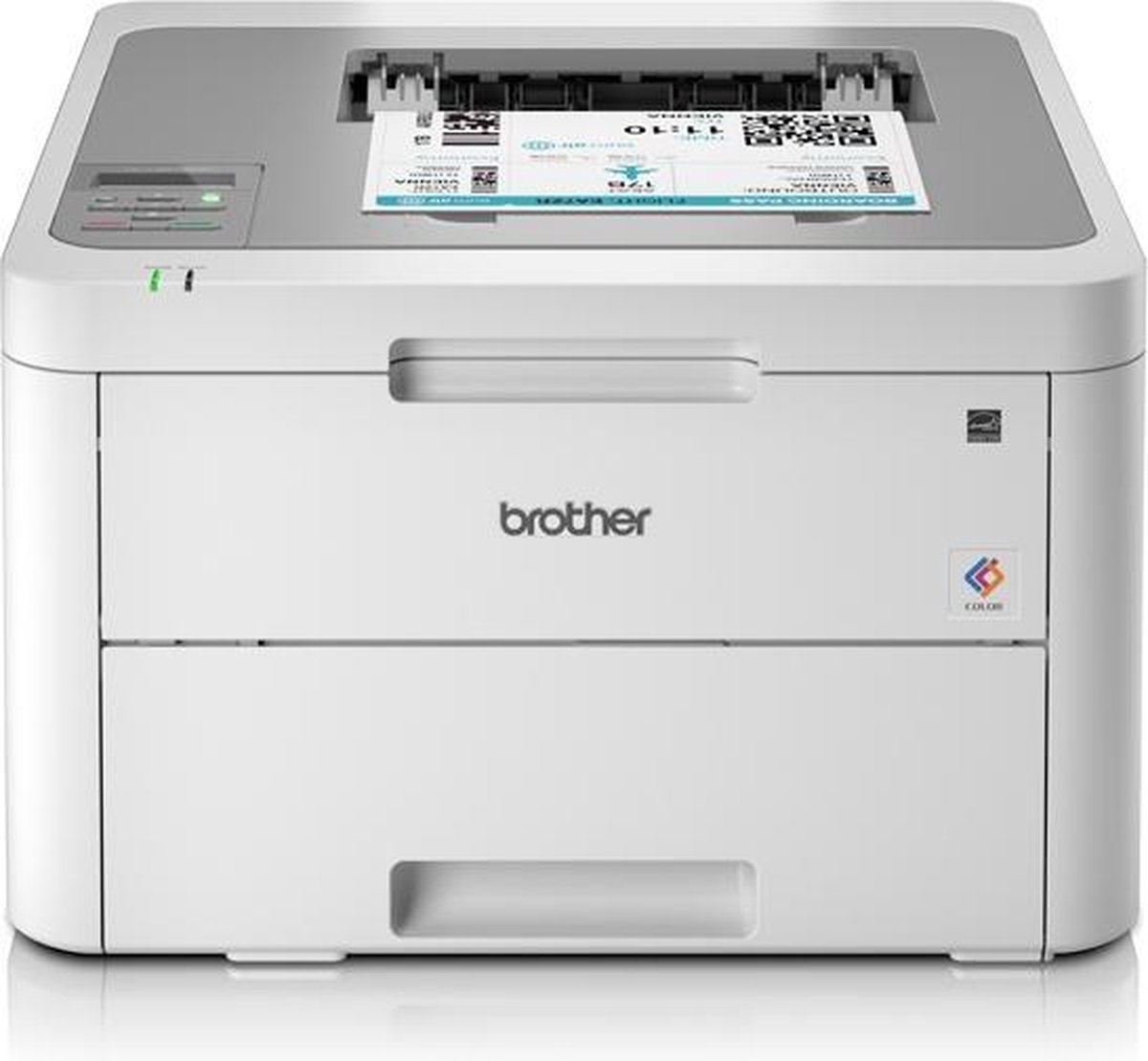
Printer type: Single function printer
Automatic 2-sided printing: No
Paper tray capacity: 250
Wireless Connection: No
Color mode for printing: Black-and-white and color
5. Brother DCP-L3510CDW
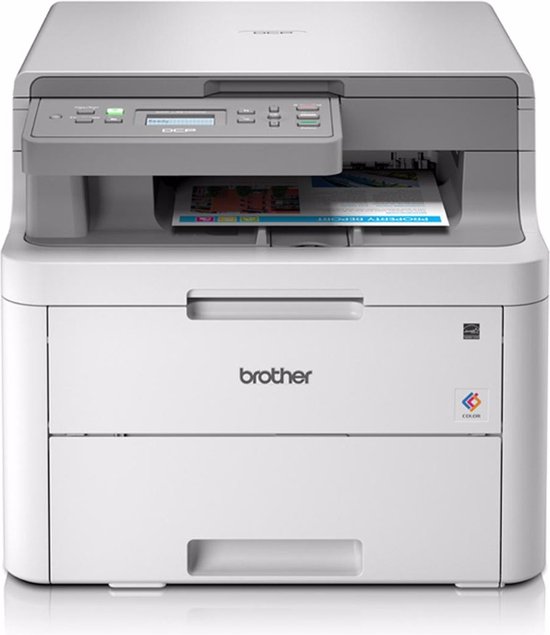
Printer type: All-in-One printer with fax
Automatic Duplex Printing: Yes
Paper tray capacity: 250
Wireless Connection: Yes
Color mode for printing: Black-and-white and color
Frequently asked questions about LED printer
The intention of the buying guide is to give you all the important information you need when buying the best LED printer, but you may still have a question. Below you will find a few frequently asked questions. Do you have a burning question that is not answered below? Let us know! 😄
❓ How does an LED printer work?
An LED printer is a regular printer that works on LED technology. This technology works on the basis of negatively and positively charged particles in combination with LED lights. This technique ensures a fast and sharp result.
🆚 Are LED printers better than laser printers?
LED printers and laser printers are quite similar in operation, but an LED printer consists of smaller and fewer moving parts. This makes an LED printer more compact and has a longer lifespan. An LED printer also has better print quality and less particulate matter emissions.
📏 How big are LED printers?
LED printers come in a variety of sizes. The format mainly depends on the type of printer and the options. For example, an all-in-one LED printer has a scanner that makes the printer larger, and LED printers with a relatively large paper capacity are usually larger due to the large paper tray(s).
Which LED printer should I buy?
That’s entirely up to you and your budget; everyone is unique. What I do have for you is a handy table with – in my opinion – the most important specifications of the best LED printers. This is how you make the best choice!
| Printer type | Automatic two-sided printing | Paper tray capacity | Wireless connection | |||
|---|---|---|---|---|---|---|
| 1 | Xiaomi Mi Portable Photo Printer | Photo printer | No | 10 | Yes | |
| 2 | Brother MFC-L3770CDW | All-in-One printer with fax | Yes | 250 | Yes | |
| 3 | Brother HL-L3230CDW | Single function printer | Yes | 250 | Yes | Black-and-white and color |
| 4 | Brother HL-L3210CW | Single function printer | No | 250 | No | Black-and-white and color |
| 5 | Brother DCP-L3510CDW | All-in-One printer with fax | Yes | 250 | Yes | Black-and-white and color |
Conclusion
There is a lot involved in the search for the best LED printer. The type of printer and the print quality are important, but you should also check what paper capacity you want and whether printing in color is wanted. Multiple types of connections are also possible and on top of that there are a lot of options to choose from.
If you list all the choices and possibilities for yourself, you will make it a lot easier for yourself. If only you could print out a list with all the options and possibilities. Another reason to quickly purchase the best LED printer. 😜
Which LED printer do you choose? Let us know and thanks for reading !